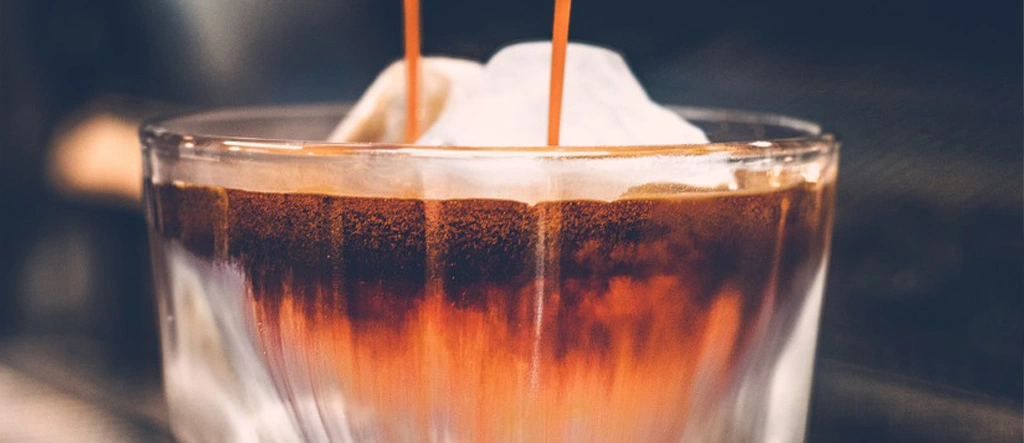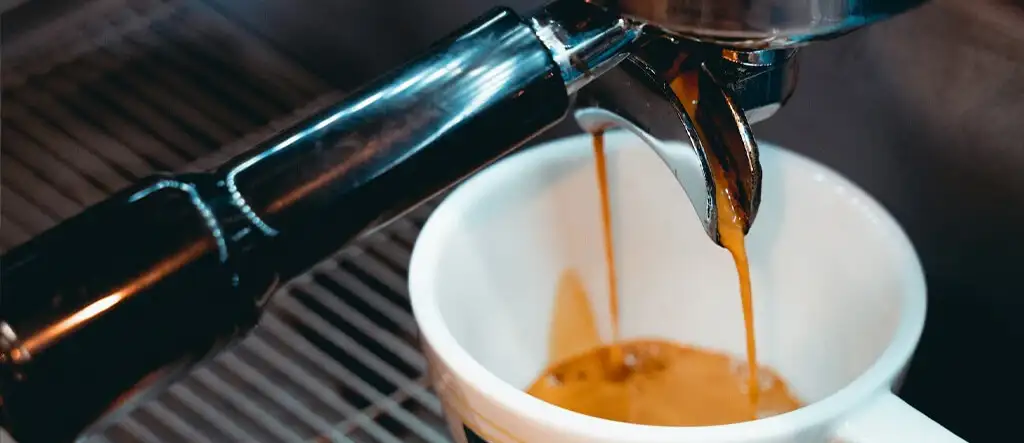Many coffee lovers savor a well-made espresso but may not fully appreciate the frothy, golden layer that crowns it. This captivating layer, known as crema, is more than just a decorative topping; it’s a key component that reflects the quality of your brew. In this article, you’ll learn what crema is, why it matters, and how to ensure your espresso has a flawless layer of this silky foam.
From selecting the right beans to fine-tuning your espresso machine, we’ll guide you through every step needed to master this essential aspect of coffee brewing.
- What is Crema?
- How Does Crema Form?
- Characteristics of Perfect Crema
- Why Crema Matters
- How to Achieve Perfect Crema at Home
- Debunking Myths About Crema
- Why Is Crema Important?
- Role of CO2 in Crema Formation
- Factors Influencing Crema Quality
- 1. Start with Quality Beans
- 2. Grind Consistency
- 3. Dose and Tamp Correctly
- 4. Preheat Your Equipment
- 5. Perfect Your Extraction Time
- Thin or No Crema
- Bitter, Overly Dark Crema
- Bubbling or Uneven Crema
- Experiment with Single-Origin Beans
- Play with Water Chemistry
- Use a Naked Portafilter
- Try Fresh Milk for Crema Art
- Cappuccino
- Macchiato
- Affogato
What is Crema?
Crema is the velvety, golden-brown foam that rests on the surface of a freshly brewed espresso. This layer forms as coffee oils and carbon dioxide interact during the brewing process. While it’s visually striking, crema also enhances the aroma and flavor of your espresso, delivering a full-bodied sensory experience.
Understanding how crema forms and its role in coffee making provides valuable insights into achieving a consistently excellent espresso shot.
How Does Crema Form?
Crema emerges through a fascinating interplay between carbon dioxide (CO₂) and coffee oils during the extraction process. Here’s how it works:
- Role of CO₂ and Coffee Oils: Coffee beans naturally contain CO₂, especially after roasting. When hot, pressurized water flows through finely ground coffee, it releases CO₂ and extracts the oils. These combine to form microbubbles, creating the creamy layer atop the espresso.
- The Influence of Roasting: The degree of roast significantly impacts crema quality. Darker roasts tend to produce richer, more abundant crema due to their higher oil content. In contrast, lighter roasts yield a thinner crema with more pronounced acidity. Finding the right roast level is essential for balancing flavor and foam quality.

Characteristics of Perfect Crema
The ideal crema exhibits several defining traits:
- Color and Consistency: A rich, golden-brown hue with a smooth, velvety texture indicates a well-crafted espresso. The tiny bubbles should create a uniform layer, adding both visual appeal and a luxurious mouthfeel.
- Volume and Persistence: Crema should form a layer about 1/16 to 1/8 inch thick and remain stable for several minutes. Its longevity reflects a properly executed extraction process and highlights the coffee’s freshness.
Why Crema Matters
Crema is more than a mark of quality; it plays a central role in the espresso experience:
- Indicator of Freshness: A thick, vibrant crema signals that the coffee beans were recently roasted and freshly ground. It also reflects proper storage and handling, ensuring the coffee’s flavor compounds remain intact.
- Evidence of Proper Extraction: Consistent crema formation is a sign that key brewing variables—such as grind size, water temperature, and pressure—were properly calibrated.
How to Achieve Perfect Crema at Home
Creating the ideal crema requires attention to several factors:
- Choose Fresh, High-Quality Beans: Opt for medium or dark roasts with a roast date no more than 2–3 weeks old. Fresher beans retain more CO₂, which is essential for crema formation.
- Optimize Machine Settings: Adjust your espresso machine to maintain a water temperature of 195–205°F and a pressure range of 8–10 bars. These settings ensure thorough extraction and rich crema production.
- Master Grinding Techniques: Use a burr grinder to achieve a uniform grind. A fine grind maximizes surface area, enhancing the interaction between water, oils, and CO₂.
Debunking Myths About Crema
Some misconceptions surround crema and its role in espresso:
- Taste Correlation: Crema contributes to the espresso’s flavor by enhancing its richness and aroma. Removing it diminishes the balance and intensity of the brew.
- The Myth of Removing Crema: Contrary to popular belief, crema isn’t a source of bitterness. Its presence indicates proper extraction and complements the overall flavor profile of the espresso.
Why Is Crema Important?
- Flavor Profile: Crema acts as the initial layer your taste buds encounter, introducing a delicate bitterness and complex aroma.
- Aesthetic Appeal: A shot with rich crema is visually appealing and signals quality to coffee enthusiasts.
- Extraction Indicator: Proper crema suggests the coffee was ground, tamped, and extracted correctly.
The Science Behind Crema
Role of CO2 in Crema Formation
When coffee beans are roasted, CO2 becomes trapped within their structure. During extraction, the pressure of the espresso machine forces CO2 to escape, creating the tiny bubbles that form crema. Freshly roasted beans produce more CO2, resulting in richer crema.
Factors Influencing Crema Quality
- Coffee Freshness
- Freshly roasted beans (7–21 days post-roast) yield better crema. Over time, beans degas, reducing CO2 levels and crema potential.
- Bean Type
- Arabica beans typically produce lighter, thinner crema due to their lower oil content.
- Robusta beans, with higher oil and CO2 levels, produce thicker, darker crema.
- Roast Level
- Medium to medium-dark roasts often achieve the best crema balance. Light roasts may lack sufficient oils, while very dark roasts can burn off CO2.
- Extraction Pressure
- The ideal espresso machine pressure is 9 bars. Too much or too little pressure can negatively affect crema.

How to Achieve Perfect Espresso Crema
1. Start with Quality Beans
Choose freshly roasted, high-quality beans. A blend of Arabica and Robusta often provides the perfect combination of flavor and crema production.
2. Grind Consistency
A consistent, fine grind is crucial. Uneven grounds can lead to under- or over-extraction, diminishing crema quality. Invest in a burr grinder for optimal results.
3. Dose and Tamp Correctly
- Use 18–20 grams of coffee for a double shot.
- Tamp with 30 pounds of pressure, ensuring an even, compact puck for uniform extraction.
4. Preheat Your Equipment
Warm up your espresso machine and portafilter. Cold equipment can lower extraction temperature, impacting crema formation.
5. Perfect Your Extraction Time
The ideal shot time is 25–30 seconds. A shorter extraction may result in weak crema, while over-extraction can taste bitter and flat.
Troubleshooting Common Crema Issues
Thin or No Crema
- Possible Causes: Old beans, incorrect grind size, or low water temperature.
- Solution: Use fresh beans, adjust the grind, and ensure your machine is preheated to 190–205°F.
Bitter, Overly Dark Crema
- Possible Causes: Over-extraction or stale Robusta-heavy beans.
- Solution: Reduce extraction time and check your roast date.
Bubbling or Uneven Crema
Advanced Tips for Crema Enthusiasts
Experiment with Single-Origin Beans
While blends are reliable for crema, single-origin beans can offer unique flavors and crema characteristics. For instance, Ethiopian beans provide a floral crema, while Indian Robusta adds density.
Play with Water Chemistry
Soft water enhances crema formation, while hard water can hinder it. Consider using filtered or specially formulated water for coffee.
Use a Naked Portafilter
A naked (bottomless) portafilter helps diagnose tamping or distribution issues, enabling you to refine your technique.
Try Fresh Milk for Crema Art
If you love latte art, perfect crema can be your canvas. Fresh, microfoamed milk pairs beautifully with a rich crema base.
The Role of Crema in Espresso-Based Drinks
Espresso crema doesn’t just add beauty—it influences the taste and texture of your favorite espresso-based drinks. Here’s how:
Cappuccino
Crema enhances the interplay of espresso and milk foam, creating a balanced, smooth experience.
Macchiato
A dollop of foam or milk contrasts with crema’s natural bitterness, elevating its complexity.
Affogato
The hot crema layer mixes decadently with cold ice cream, adding a warm, frothy element to this dessert drink.
Wrapping Up
Achieving the perfect espresso crema is both an art and a science. From selecting the right beans to fine-tuning your technique, every step plays a critical role in creating that golden crown atop your espresso shot. While it takes practice and patience, the reward is a velvety, aromatic masterpiece that embodies the essence of coffee craftsmanship.
So, grab your espresso machine, embrace the process, and enjoy the journey to crema perfection. Your morning ritual will never be the same!
This guide offers everything you need to master espresso crema and elevate your coffee game.

FAQs





